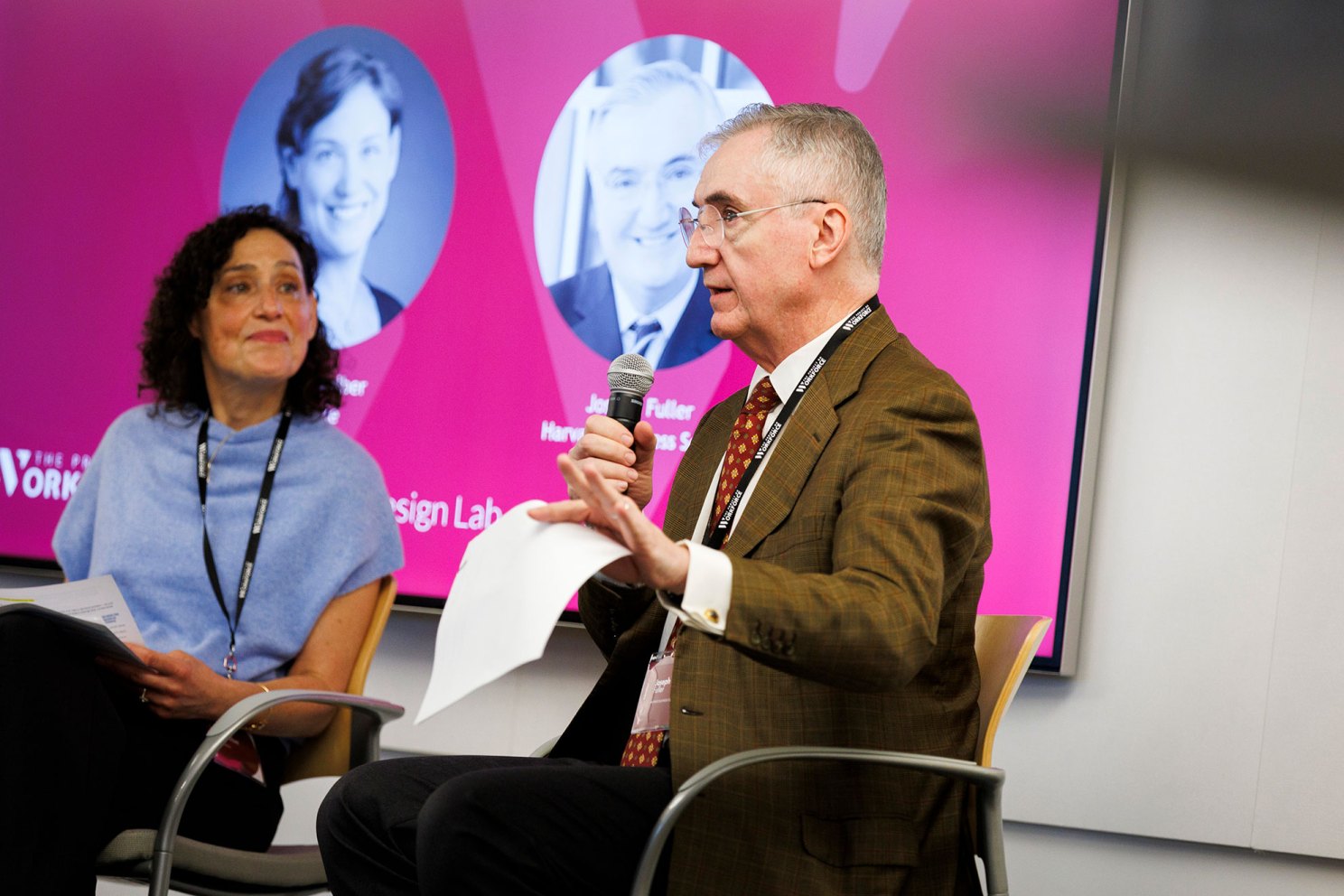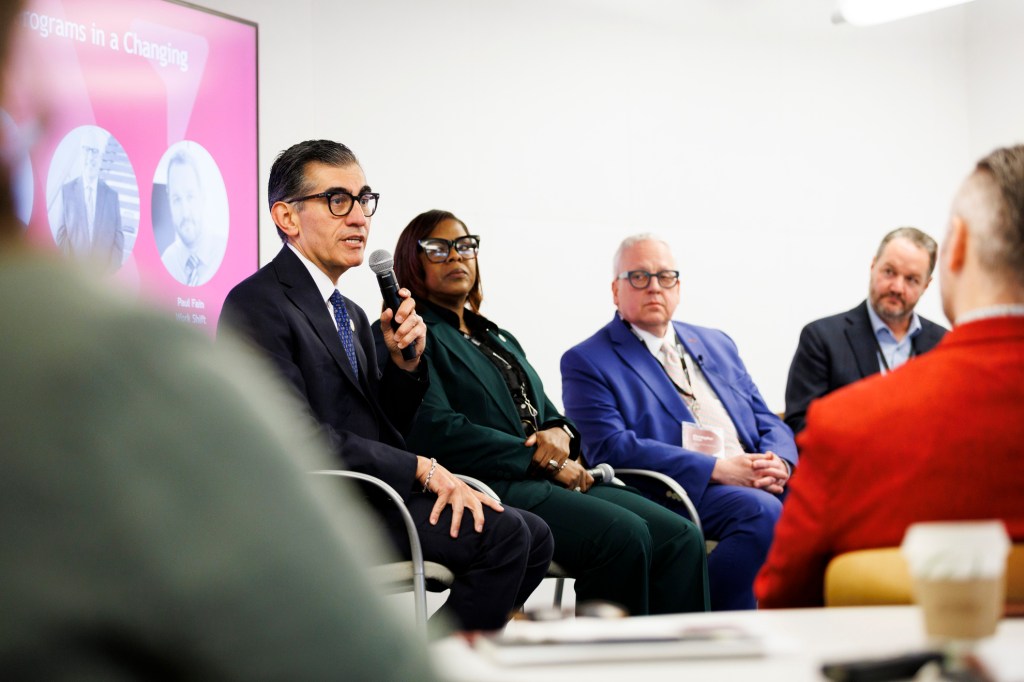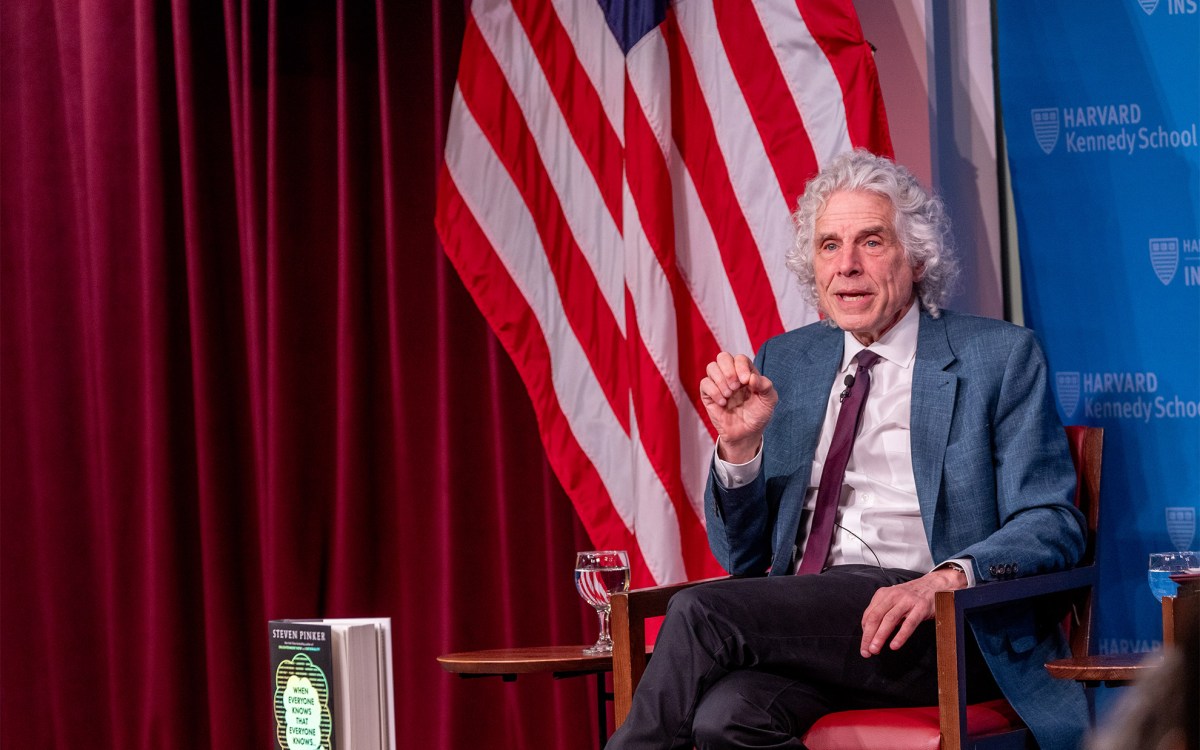How AI is disrupting classroom, curriculum at community colleges
Conference examines ways to deal with unique vocational, educational challenges

Joseph Fuller, faculty co-director of the Project on Workforce at HBS, with Lisa Gevelber, the chief marketing officer for Gemini, Google’s AI product.
Photos by Stephanie Mitchell/Harvard Staff Photographer
Community colleges are scrambling to adjust to the many disruptive changes AI is bringing both to the classroom and to how the institutions need to think about preparing students for the future.
That was the subject of a Harvard Business School conference focused on overcoming the unique financial, administrative, and curricula challenges facing the schools, which offer both vocational training and an option for the first two years of a bachelor’s degree program.
What has become clear is that AI cannot be ignored.
“More than 70 percent of employers say they’d rather hire someone with less experience but who understands AI than someone with more experience. That’s a big change,” said Lisa Gevelber, chief marketing officer for Gemini, Google’s AI product.
The daylong conference was organized by the Project on Workforce at HBS, the Education Design Lab, and Axim Collaborative, a Harvard-MIT nonprofit that supports organizations that help students overcome obstacles that keep them from completing a community college education. It featured leaders from both the public and private sectors as well as community college administrators and scholars.
“More than 70 percent of employers say they’d rather hire someone with less experience but who understands AI than someone with more experience.”
Lisa Gevelber
Schools get free access to Google AI for Education, where they can find AI training for students, faculty, and staff, as well as a career certification program. They can also share best practices with other schools. Understanding how to use AI will help students land not only a good job, but meaningful work for the rest of their lives, said Gevelber. “And that’s really our goal.”
To avoid creating a new digital divide, it will be “very, very important that we create an AI-literate generation of people up and down the income distribution across the country,” said Joseph Fuller, faculty co-director of the Project on Workforce at HBS. “If we can give them the social and hard skills that will allow them to consider entrepreneurship, that can unlock a lot of dynamism and have a great impact on income inequality issues.”
“We know that not all postsecondary pathways look the same, so we are focused on making sure everybody has an educational opportunity to thrive in a changing economy. Community colleges provide critical pathways to work and four-year degrees, so we were honored to support this important work,” said Stephanie Khurana, Axim chief executive.
Besides helping students with classes and preparing for the future, AI can also help inform curriculum.
It’s not enough to tell people struggling to finish community college what opportunities for education and training are out there, said Deniece Thomas, commissioner of the Tennessee Department of Labor and Workforce Development. They need to be shown practical pathways that make it possible for them to complete their studies.
In order to overcome the frequent disconnect between state agencies and local education officials, Tennessee works closely with a wide range of institutions to ensure residents get clear, up-to-date information about the assistance available to them, she said.

Getting accurate and timely labor market data, and insights into what industry sectors are looking for so students learn marketable skills, historically has been a huge challenge for community colleges. Now, AI tools can extract data and interpret market information to help bridge that gap.
“Credentials of value to us are critical,” said Mike Flores, chancellor of the Alamo Colleges District in San Antonio, Texas. “And that our students come in and are able to exit with a credential that’s going to provide them with a family-sustaining wage, or they’re able to transfer to the University” and graduate with a bachelor’s degree that provides them with that salary.
As more firms eliminate jobs because of AI, especially at the entry level, community colleges need to “be realistic” about which jobs will still exist and which skills still marketable, said Fuller.
According to the project’s research, 12 percent of jobs today are being done more productively by AI than by human workers. However, in about 17 percent of jobs, AI can take over tasks that once required specialized training or credentials, opening those positions to a broader range of the workforce.
“So, this is not all doom and gloom,” said Fuller. “We just have to be realistic.”
Outside of the tech community and the academy, at the moment most people are only dabbling with AI and learning what it can do. That’s fine for individuals, but it’s not a winning strategy for community colleges, Gevelber advised school administrators.




